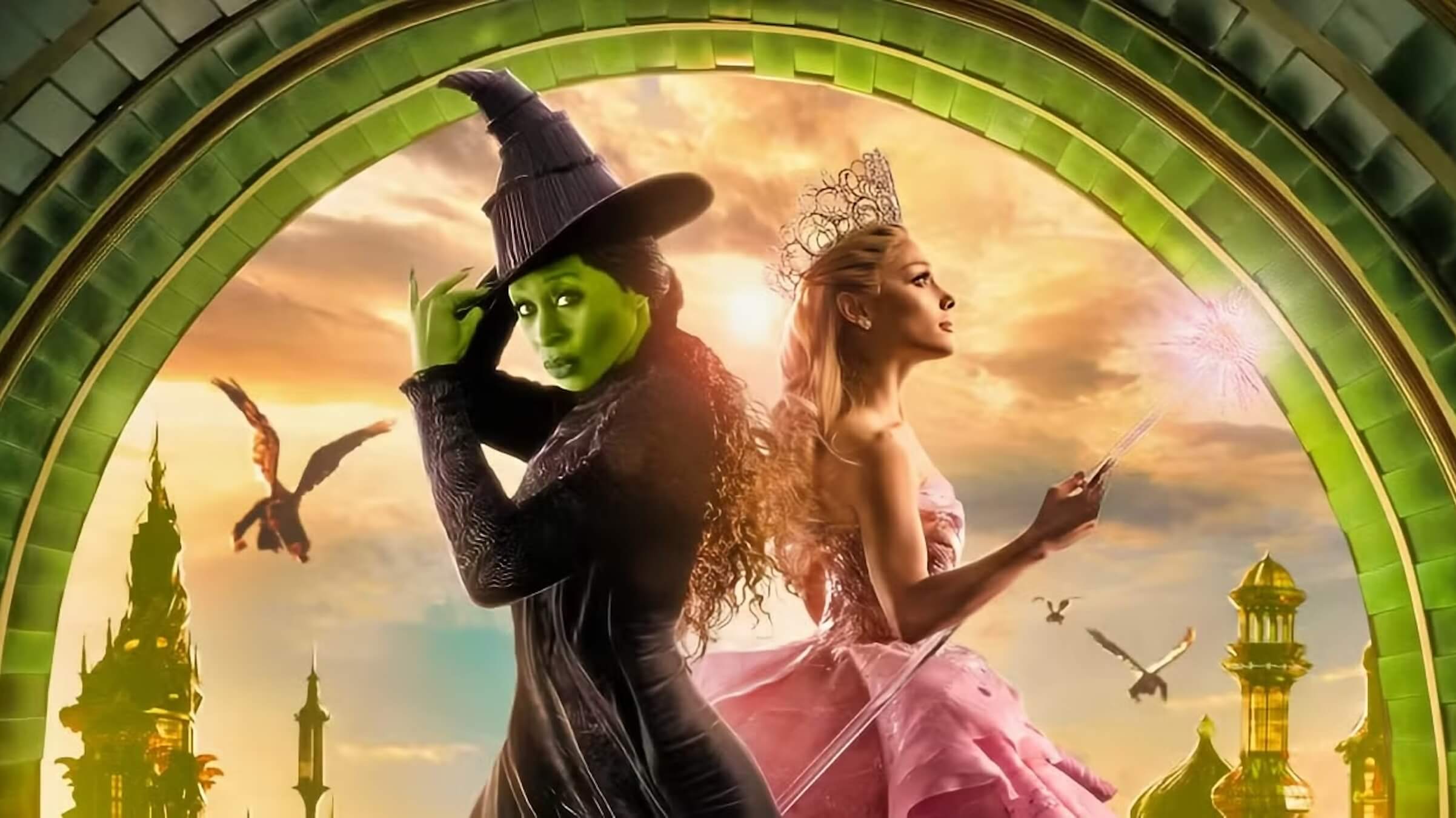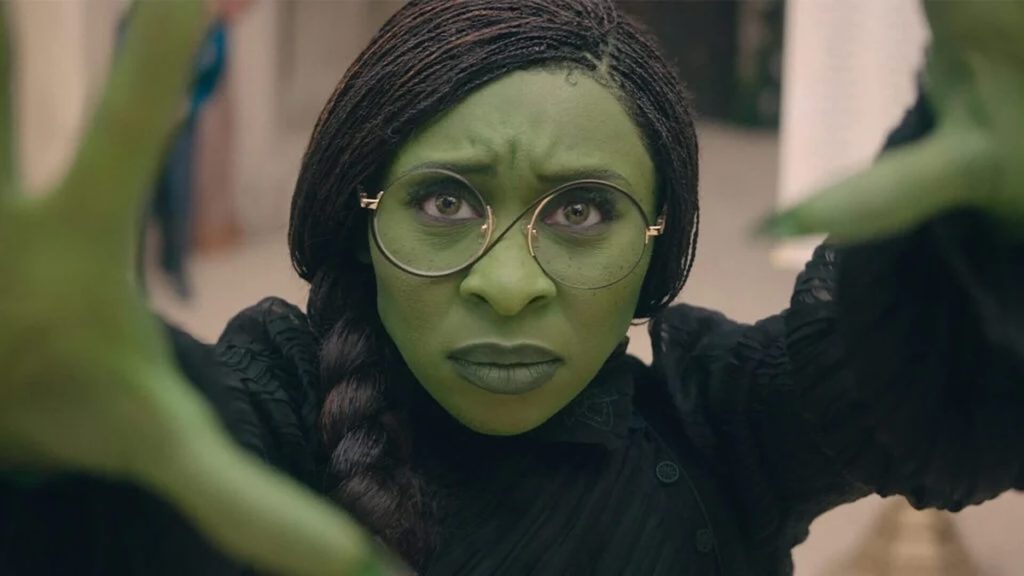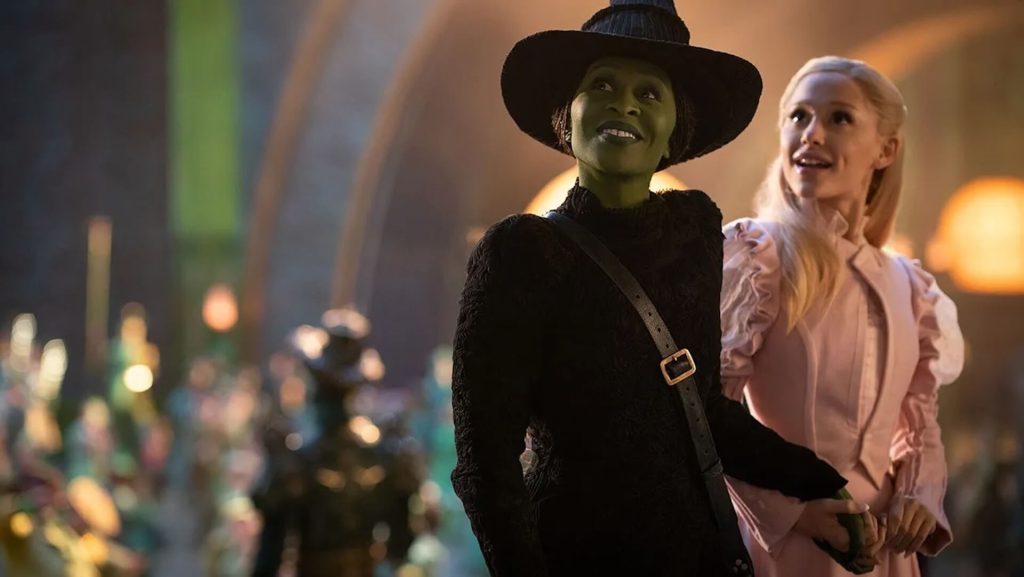By Ken Miyamoto from ScreenCraft · December 30, 2024

Welcome to a continuation of The Hero’s Journey Breakdown where I explore Joseph Campbell’s mythological storytelling structure and how iconic films fit into that mold.
The late Hollywood creative executive Christopher Vogler’s approach to Campbell’s structure broke the mythical story structure into 12 stages that were more applicable to the cinematic storytelling structure. For this series, we define the stages in simplified interpretations.
Here we turn to the cinematic adaptation of the Broadway musical Wicked.
Note: As with any application of story structure or formula, this is just a hindsight interpretation and implementation of The Hero’s Journey to this cinematic tale. There can and will be variances.
Elphaba’s (Cynthia Erivo) ordinary world is a life where she is ostracized for her green skin. When she arrives at Shiz University to escort her sister Nessarose (Marissa Bode), she is an outcast.
This ordinary world establishes her struggles with acceptance and love. Her natural inclination toward rebellion and a desire to fit in sets the emotional groundwork for her journey to come.
Elphaba’s call to adventure comes when her magical abilities manifest at Shiz University. Madame Morrible (Michelle Yeoh), recognizing Elphaba’s raw power, asks her to stay at the university and promises to arrange a meeting with the Wizard of Oz (Jeff Goldblum)—something Elphaba has secretly hoped for her whole life.

Despite her excitement, Elphaba is burdened by doubt. Her insecurity looms large, compounded by years of rejection and her father’s disdain. She doesn’t have an outright refusal of the call beyond the initial doubt before accepting the invitation to stay.
Madame Morrible is the initial mentor, albeit with questionable motives. She nurtures Elphaba’s magical talent and offers guidance that nudges her toward the fateful meeting with the Wizard. But her mentorship feels almost transactional, which plants seeds of doubt.
Her true mentor is Galinda (Ariana Grande). While their friendship begins as a clash of opposites, Galinda teaches Elphaba about the social intricacies of their world and forces her to reflect on her own values and desires.
Read More: Top 10 Best Movie Mentors
One evening, Elphaba follows Dr. Dillamond (voiced by Peter Dinklage)—a talking goat and one of the last remaining animal professors at Shiz—to his off-campus home. She learns that other animals are being stripped of their civil rights and losing their ability to speak.
In response, Elphaba reassures him that the Wizard will surely make things right.
Elphaba finds an ally in Galinda, though their friendship is tested by their differing values.
But Galinda starts as somewhat of an enemy but evolves into an ally.
Fiyero (Jonathan Bailey), the dashing prince, also becomes a significant ally, offering both companionship and romantic tension. There are other allies as well, including her very own sister Nessarose.
Early enemies include Elphaba’s father, as well as the whole student body—until they accept her with the help of Galinda.
The Wizard and Madame Morrible later reveal themselves as antagonists, representing the corruption and deceit of Oz’s ruling powers.
The tests are first showcased with Elphaba’s struggle for acceptance within the school. She later takes on the mantle of standing up for the animals as well, eventually releasing a lion cub that was going to be experimented on.
Elphaba gets an invitation to meet the Wizard. She and Glinda travel to the Emerald City with high hopes, believing that the Wizard will help the animals.
The Wizard’s true nature is revealed when he tasks her with enchanting the winged monkeys. Elphaba realizes that her idealized savior, as well as Morrible, are manipulative figures seeking to exploit her talents for their own agenda.
Elphaba learns that the Wizard is a fraud and he and Morrible are behind the animals losing their rights and speech. This betrayal shatters her illusions and forces her to embrace a new path.
Elphaba devises a plan. She steals the Grimmerie, a powerful spellbook, to hone her magic and challenge the regime.

Her road back takes her reward to do some good for the animals and the people of Oz. Her attempts to do good are misconstrued as evil, isolating her further. The label of “wicked” is attached to her. Her actions unintentionally hurt those she’s trying to protect, including the whole Emerald City. She’s seen as a Wicked Witch.
Read More: The Most Epic Journeys in Film and TV
Elphaba faces a final, transformative challenge. She fully embraces her role as the Wicked Witch, not as a villain in her eyes, but as a defiant force for justice. She is reborn as a self-assured, powerful person.
Her climactic “Defying Gravity” moment symbolizes her transcendence and resurrection. She literally rises above her adversaries, proclaiming her freedom from their constraints and setting the stage for the ultimate battle in Wicked: Part 2.
The return is yet to be seen. If we look at the film—which is marked in Wicked: Part 1, mind you—her Resurrection can be seen as her return as she flies above all of Oz for all to see, using her newfound “reward” to oppose the Wizard and Morrible.
Read More: The Hero’s Journey Breakdown: Everything Everywhere All At Once
Ken Miyamoto has worked in the film industry for nearly two decades, most notably as a studio liaison for Sony Studios and then as a script reader and story analyst for Sony Pictures.
He has many studio meetings under his belt as a produced screenwriter, meeting with the likes of Sony, Dreamworks, Universal, Disney, Warner Brothers, as well as many production and management companies. He has had a previous development deal with Lionsgate, as well as multiple writing assignments, including the produced miniseries Blackout, starring Anne Heche, Sean Patrick Flanery, Billy Zane, James Brolin, Haylie Duff, Brian Bloom, Eric La Salle, and Bruce Boxleitner, the feature thriller Hunter’s Creed, and many Lifetime thrillers. Follow Ken on Twitter @KenMovies and Instagram @KenMovies76.